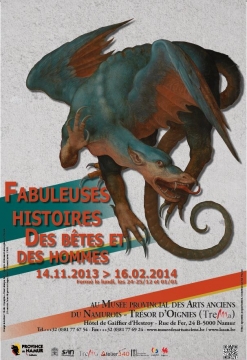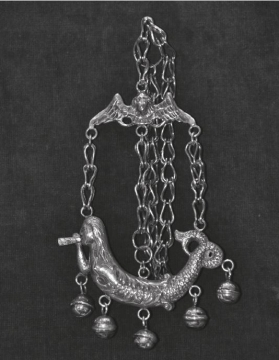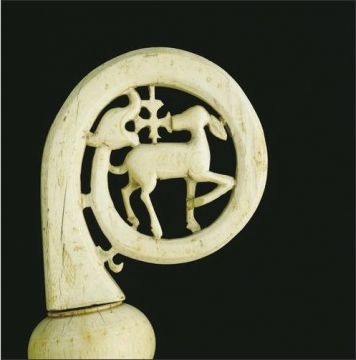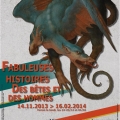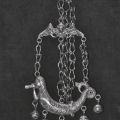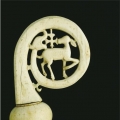Animals in the art of the Middle Ages is the theme the museum has chosen to present a bestiary featuring a multitude of antique works and artefacts. The exhibition has brought together some 120 paintings, sculptures, illuminations and silverwork inspired by animals, as represented in man’s imagination, real and fantastical, domestic and wild, painted, engraved and sculpted.
This retrospective also examines artists’ infatuation with, and use of beasts, represented in all manner of ways. Whether as didactic support, religious expression or as a representation of vice or virtue, the graphic qualities of beasts enjoyed a privileged place in the artist’s repertoire.
It is within this context that two rattles from the Michel Wittock Fund are exhibited. The rattles represent mermaids. During Medieval times the mermaid was thought of as an animal, but one of a somewhat ambivalent nature: hostile and evil to man, as well as a demon of death, but also as a purveyor of goodness, mother goddess and guardian of children.
A bishop’s crook from the Trésor d’Oignies is another highlight among the exhibits. Symbolising the shepherd’s crook, this episcopal crook has at its end a serpent’s head, with its jaws opening to devour the cross resting on the back of a ewe.
During the Middle Ages, the serpent also had a rather hybrid image, as the wisest and most cunning animal of the Creation, but also the symbol of original sin. The animal was often represented by analogy with evil and yet several extracts from the Bible evoke the symbol of the serpent in a positive light, notably in the Book of Numbers (Chapter 21, 4-9), in which Moses erects a bronze statue of a serpent to protect the Hebrews from serpent wounds. It was from this that the iconography of the bishop’s crook in the form of a serpent developed, recalling Moses’ pastoral crook.
The exhibition is on until 16 February 2014
For further information:
J. TOUSSAINT (sup.), Fabuleuses histoires. Des bêtes et des hommes. Exhibition catalogue (from 14 November 2013 to 16 February 2014), Musée Provincial des Arts Anciens du Namurois.
